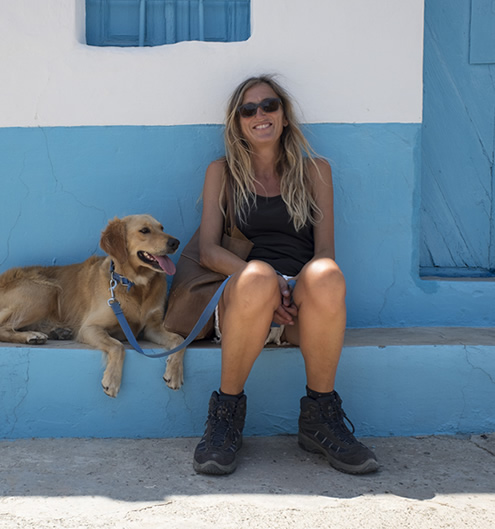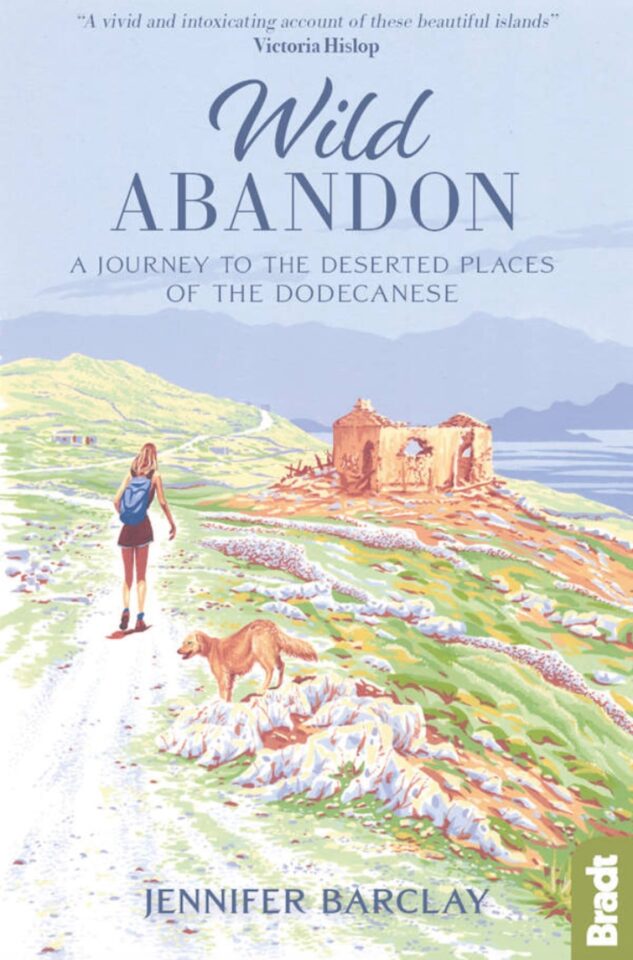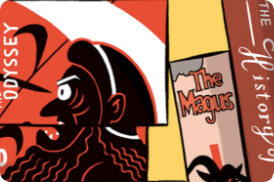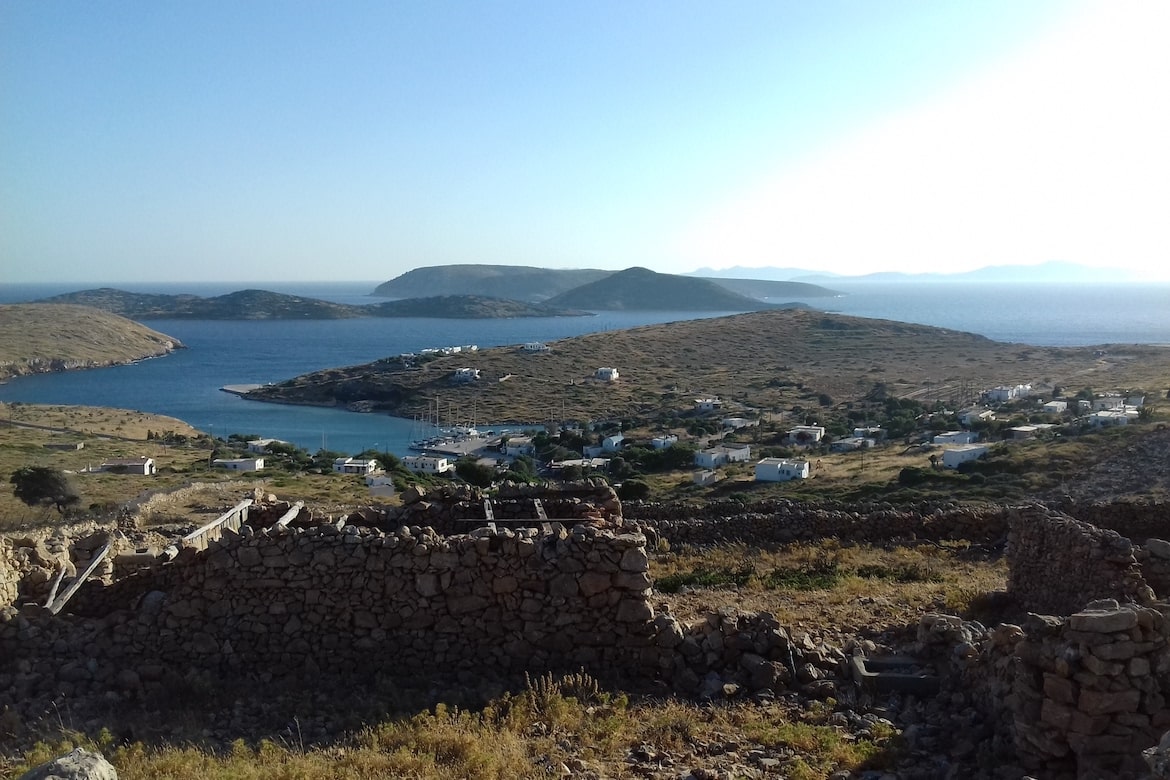I was hundreds of metres above the volcano of Nisyros one windy evening, and there was nothing to be heard but a cow lowing. The blue-and-white chapel beside me, surreally perfect in the warm orange light of a June sunset, had been dedicated in 2010 by a Nisyrian of New York. It was around then that I started thinking about the abandoned places of the Dodecanese.
I’m a British writer, and I moved to Tilos in the middle of this group of Greek islands in the southeast Aegean almost a decade ago.
Having fallen in love with Greece as a teenager, studied Ancient Greek at school, taught English in Athens after university and cleaned hotel rooms in Oia, Santorini, I left the country to establish a career in book publishing in Canada and then England, but finally in my early forties fulfilled a dream to live on a tiny island and work from home.
I have carved out enough time in my new life to write three books about Greece: Falling in Honey, about my bumpy journey to a life in Mediterranean sunshine; An Octopus in my Ouzo, about real life (and really living) on a tiny Greek island year-round, living small and thinking big; and the new book in which I take the reader with me to many different islands, Wild Abandon: A Journey to the Deserted Places of the Dodecanese.
Nisyros is visible on the horizon from my home, and I’ve visited many times. It’s a place I love, and it has a wealth of abandoned places: the terraced fields that cascade down the steep hillsides, the spiladi or cave-houses with archways to protect against earth tremors, the kazani for distilling tsipouro; the loutra or bath-houses, extravagantly built in the early twentieth century, attracting visitors from around the Mediterranean to bathe in the thermal waters; the abandoned harbour, once a busy port for the export of figs, almonds and acorns.
Of course, there are also ruins from pre-history, but I’ve been looking particularly at the things left behind in the last hundred years or so, when life as it had been lived for so long suddenly changed.

Down in the caldera I’d seen abandoned farms: threshing circles, water cisterns and stone houses littered with animal bones.
Once, the villages on the rim of the volcano had been home to thousands of people. It was the 1933 earthquake that prompted a mass emigration, at a time when the New World needed people and Greece still hadn’t taken the Dodecanese into its embrace. The monastery of Panayia Kyra was rebuilt by a brotherhood of Nisyrians in America just two years after the earthquake.

It struck me powerfully that so many islanders left their rural existence for such a different life on the other side of the world. But while science may reassure us today that the volcano is stable, a century ago a disastrous earthquake could have been persuasive.
The entire population of Nisyros has remained around a thousand for a few decades, while the Nisyrians in the USA number around twelve thousand.

All over the Dodecanese, for different reasons, the last century or two saw the island populations plummet.
Halki, many of whose people left to be sponge divers in Tarpon Springs, Florida, has a permanent population of around 250, and its hinterland is rich in abandoned settlements and the remains of centuries of farming, many invisible from the tiny port, the island’s only inhabited village now.
Many villages of these islands were left to crumble, with a handful of residents. The people who stayed were as fascinating to me as those who left, and those who came back.
Staying in the village of Emborio one February for more research, I met Costas from Astoria, who was restoring his great-grandfather’s house. It was something he had wanted from when he was a kid.
“I said to my parents: give my sister everything,” Costas said. “I just want the house in Nisyros.”
I also met Anna, whose children run the taverna Apiria, and who has lived in the village her whole life. Her only complaint is the cows and goats that now run wild and destroy the gardens.

I’ve learned enough Greek to converse with the islanders, and when I tell people I live on Tilos, it usually starts a conversation. I’m able to travel in winter when people have more time to talk. Walking with my dog and a backpack helps to break the ice with strangers.
It seems especially important to record the stories of the older people in these semi-deserted places, as those who remember the past will die and take their memories with them. But I have also been delighted to meet younger people keeping the old ways alive, and to see the remarkable bond the families who left retain with their ancestral villages.
For a while I lived in the wild north of Karpathos, where older ladies who wear traditional village dress every day sometimes speak English with a Baltimore accent.

Olympos has kept up traditions lost elsewhere – but partly through the support of those who went away when they had nothing.

The deserted places of the Dodecanese have taken me on a fascinating journey through the islands’ varied history – from a time when people were self-sufficient and prospered through shipping, sponges and burning rock – and to meet some extraordinary people. I hope the journey isn’t over yet.
About the author

As well as being an author, Jennifer Barclay is an editor and literary agent specializing in memoir, narrative non-fiction, travel and adventure, literary fiction and crime fiction. Originally from the north of England, she has lived in several countries and enjoys working with literature that has an international flavour.
Her latest book, Wild Abandon: A Journey to the Deserted Places of the Dodecanese, is now available via Amazon. Victoria Hislop, author of the best-seller The Island, called it “a vivid and intoxicating account of these beautiful islands.”


















